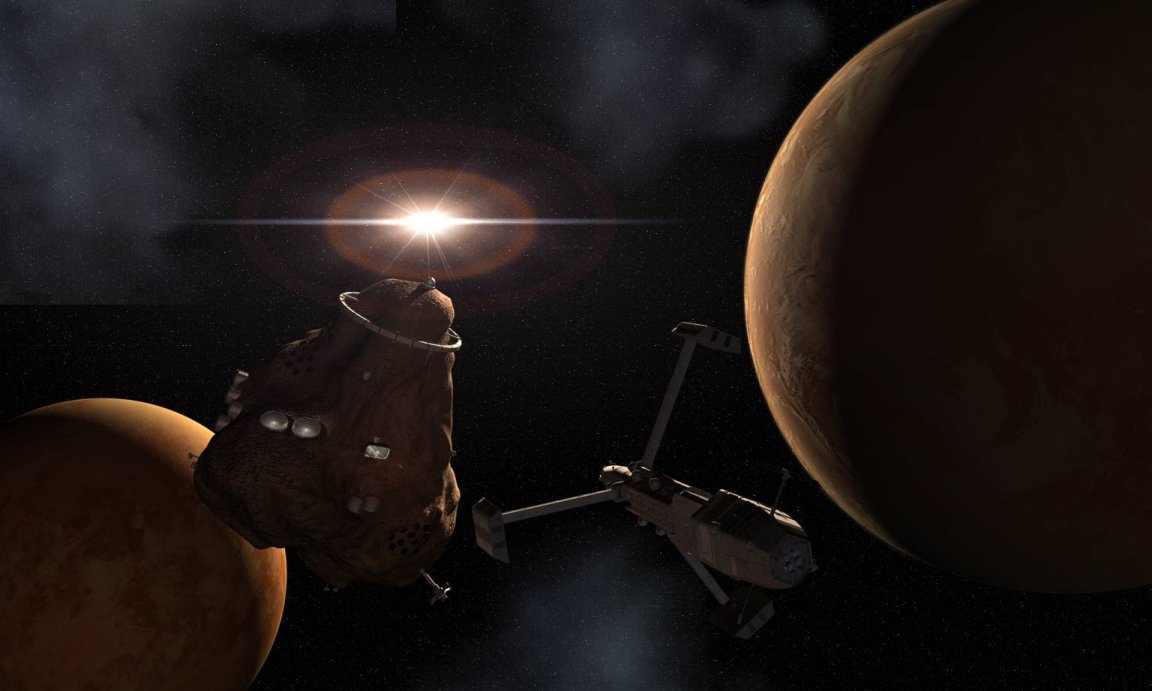

Ships of 2320AD
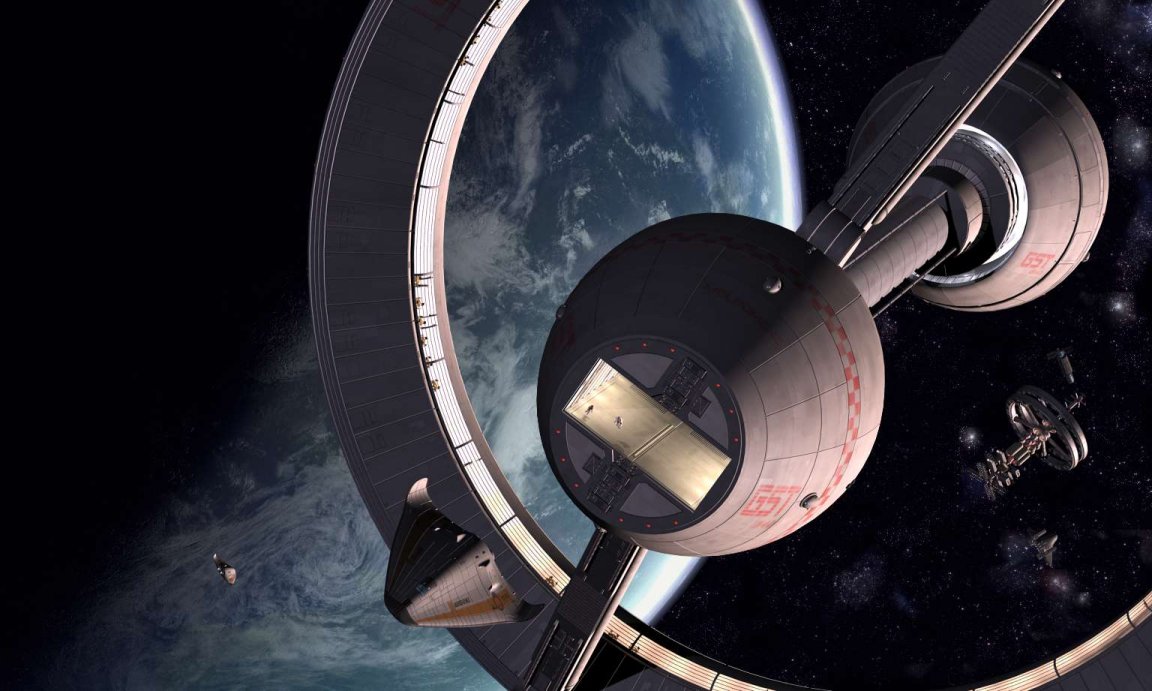
|
Above: The Esprit de Casablanca in
October 2319 launching its integral pair of AB.400 landers ‘Rick’ and ‘Ilsa’
from a crowded Earth orbit to collect a number of Narrative From crossing
the shelf we were bombarded with messages of congratulations and welcome both
from passing ships and relayed through OQC traffic control. Smiles broke out
across the bridge and the relief of homecoming washed over us all, for us the
war finally was over. At least for now. The devastation
of the French Arm wasn’t reflected at all at Sol. The system was plump with
merchants, miners and passenger ships. The outward vector to the FTL shelf was
crowded with racing ship outbound to dozens of ultimate destinations. The Tall
Ship Esprit de Casablanca was
one, which also tight-beamed across a recording of one of their famous and
risqué cabarets.
Myrmidon Class Corvette |
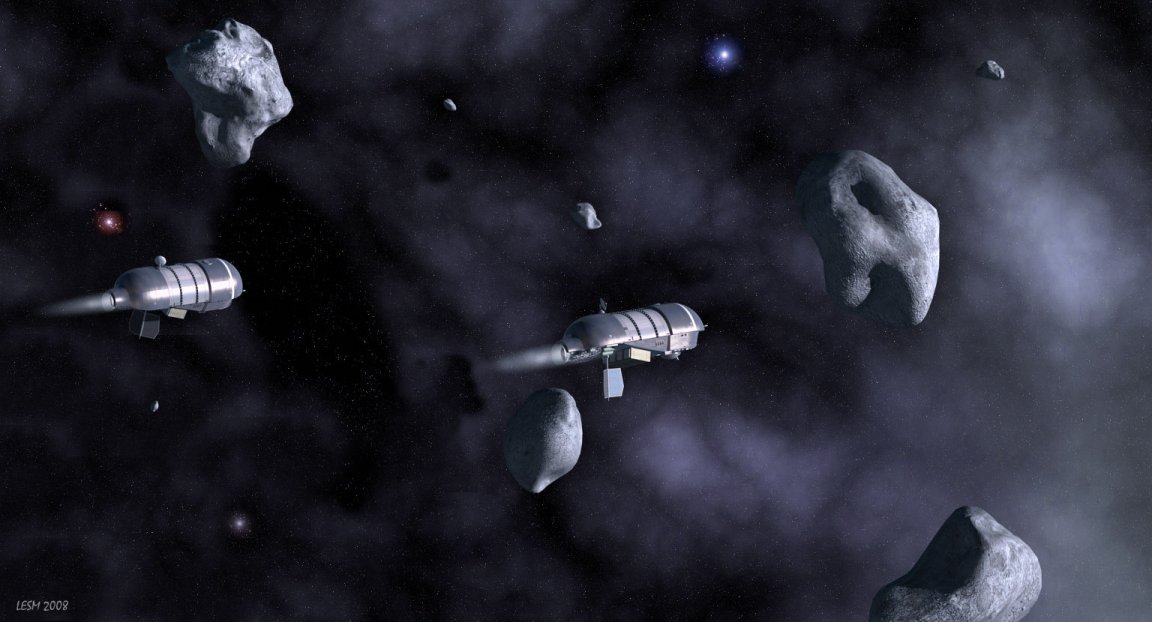
|
Above: A pair of Freihafen Raumwaffe Myrmidon corvettes the K-4 and K-7
patrolling in the Alpha Centauri system late in 2319. The Raumwaffe
is currently undertaking a fleet wide upgrade of its Myrmidons. The Myrmidon Class is armed with a pair of
lasers, two submunition dispenser and four missile hardpoints which gives it a respectable punch. It is not
designed as a warship however, but rather as a cutter and picquet
ship capable of screening and guarding tasks. FSI’s
design was cheap, quick and easy to manufacture at even the smallest shipyards
and the company was willing to licence the design for a very small amount. The result was that the Myrmidon was taken
up by dozens of nations to use as a colonial guard ship and free up regular
warships. Even colonies often purchased these small vessels from local budgets
and several system defence forces grew dramatically or formed for the first
time. The design was also taken up by a number of privateers who could not
afford more expensive craft. The Myrmidon saw action in dozens of
engagements throughout the 2nd Kafer War of which the contribution of those in
the hands of the local Raumwaffe at the Battle of Nibelungen was perhaps the most notable. The successful
conclusion of the war found a situation where the Myrmidon had been
over-produced and most nations were looking to reduce their holdings of these
vessels. A few were scrapped but many were demilitarised and sold onward into
private hands. Today Myrmidons can be found throughout
human space in any number of configurations. Most ply there way as small
trading vessels on the frontiers, while others remain in military service
including in the hands of the AAVF in Ylii space.
There are also a number of Myrmidons in the hands of people on the edges of the
law as smugglers, privateers and even pirates. FSI no longer manufactures this
ship however there are some smaller yards who turn out
limited numbers of the ship each year. The Myrmidon typically has 24 crewmembers,
although six of these are embarked troops who may in fact be replaced by
additional crew or passengers. It is a small ship however and lacking many
creature comforts the crew must live cheek by jowl. The ship has no spin
habitat however there are a number of small ‘hamster cages’ that can be used
for health purposes during longer voyages. |
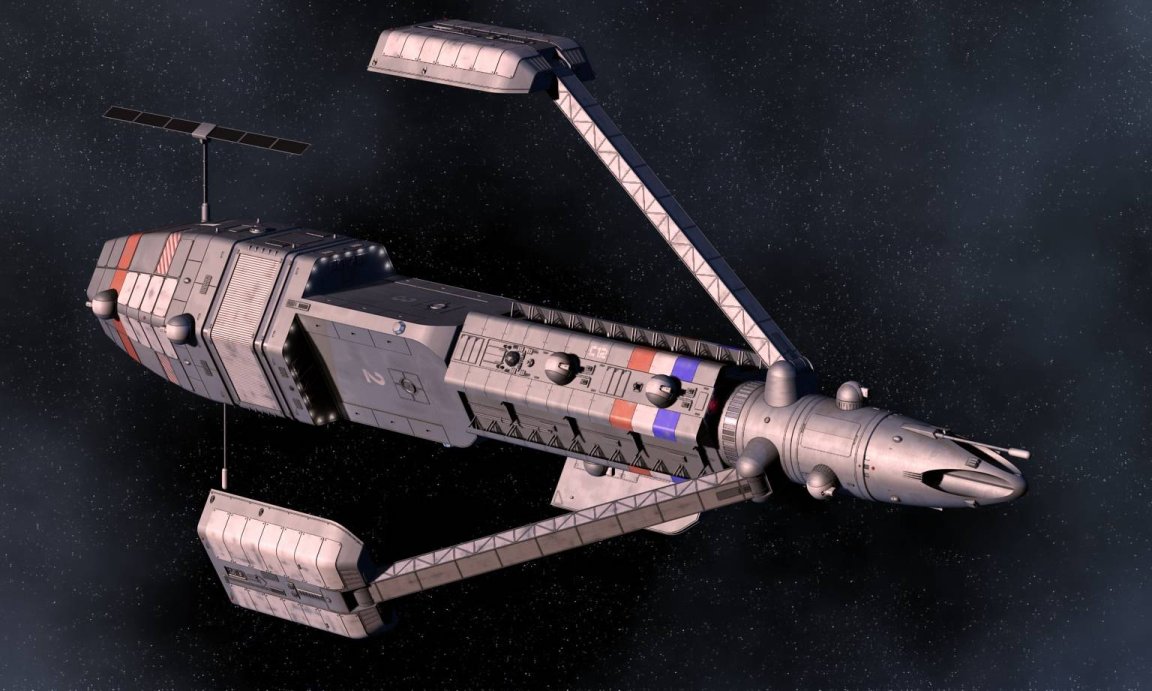
|
Above: The IFS Rochemont transitions to action stations during manoeuvres with the Fifth Fleet in
the Gamma Serpentis system. The Amiral Class is the
mainstay of the ESA nations’ combat power in the Kafer Sphere and skirmishes
with Kafer infiltrators are not uncommon. The Amiral Class cruiser is the lighter
cousin of the Suffren Class and is a significant
evolution of that craft which is simpler to construct while retaining most of
its capability. At one stage the Vengeur Class CGL
looked likely to be the main replacement to the Suffren
however for all its ship-killing credentials it still lacked the all round
versatility of the Suffrens. The onset of the 2nd
Kafer War kick started the process to produce new warships and the new Admirals
were high on the list of priorities. The lead ship of the class the Bertrand was
launched in 2308 with a sister ship due to come off the slips above
The Amiral was chosen in 2306 as the Light
ESA Cruiser (LESAC) design and several of these ships were commissioned with
the British as the Furious Class, Ukrainians as the Borodin Class. Azania and several other nations operated these cruisers and even The Amirals feature a powerful broadside of
14 LL108 lasers as well as a pair of submunition
dispensers. The integral and distinctive missile armament was no fewer than 12
heavy missiles with the option of the installation of additional missile packs
in the two small bays. In terms of pure combat performance the Amiral is more
than equal of the Suffren, what it lacks is the
embarked troop complement. |
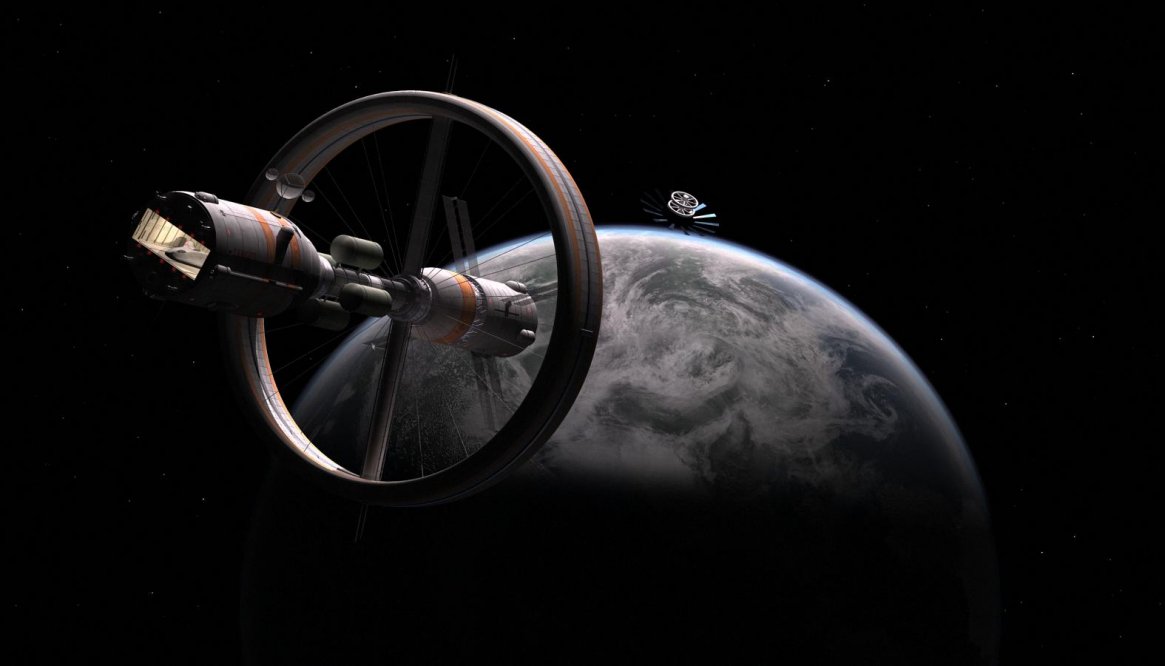
|
Above: The Tanger moving away from the Beowulf on the French Arm in transit to Kimanjano. The
Tanger is
currently operated by Arianelines but saw significant
action for over ten years in the Kafer War. The Ariane 25 Class
liners are the antithesis of the Tall Ship or These relatively fast ships were employed on
the long runs out from the Core to the Beta Canum
Cluster or on charter out to the other colonial arms, however with the Kafer
War eight of these ships were among the first to be seconded to the military.
Stripped of even the normally spartan fittings these
vessels were able to nearly 2000 soldiers in reasonable comfort, thanks to the
recreational facilities. This made these vessels ideal for long duration
mission such as the invasion of Gamma Serpentis. Since returned to civilian service the
remaining vessels retain a glamour associated with their role in the war and
many proudly display battle honours and scars. Several ships were utilised for
many years for disaster relief on the French Arm and elsewhere Although
beginning to show their age the Ariane 25’s are
ageing gracefully and each has very much its own character and simple décor
themed along with its name. The ships are capable of carry over 600
passengers with 160 crew on board. They have a
complete area dedicated to sport and recreation to allow their passengers to
arrive at their destination in the best condition possible. The ship
usually relied on off-board interface capability but also carries a pair of landers for movement of people too and from a world. |
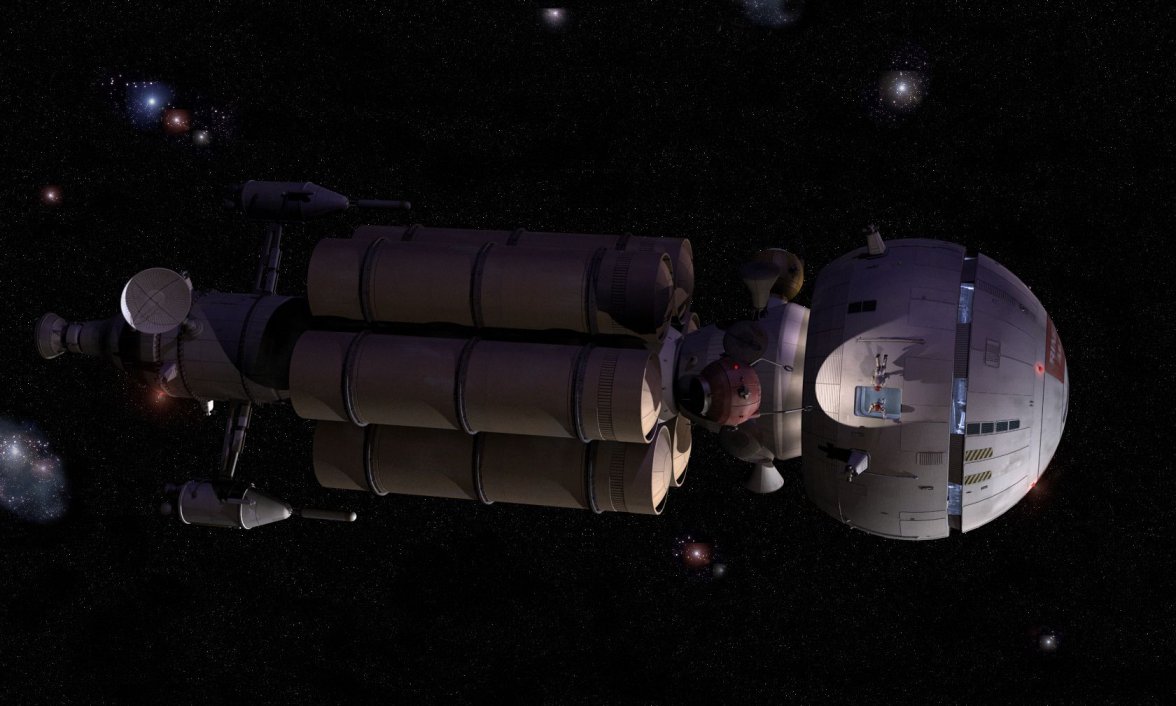
|
Above: The Scandinavian Union owned Ringvul on operations deep in the American Arm some
time in 2019. The Beagle Class is a response to ships like
Trilon’s The ship is actually produced by the British
Cargo yards as a commercial venture from a largely Canadian led design. Over
twenty of these ships have been procured by an array of countries, foundations
and commercial ventures. The Beagle Class have been seen operating on all arms
of human space and even deep in other areas such as beyond Ylii
space. Many nations such as The Beagle operates with a crew of 50
spacers which includes a scientific team of 16. It has a substantial fuel load
enabling operations of a significant duration. The ship has a significant small
craft compliment including two stutterwarp capable sensor drones, two small
craft to aid ice processing and 6 re-entry modules containing an array of
sensors and remote drones. In all it is capable of conducting a thorough
initial survey of a system utilising its own and off-board sensors and then a
thorough remote exploration of a single world with its re-entry modules. The Beagle Class has been generally a
successful, simple and robust design. Several have been encountered with owner
modifications such as self defence armament or enhanced cargo carry capacity.
At least one has been operating as a trader on the frontiers of the American
Arm. |

|
Above: A famous CGI image from a ESA documentary about the Kafer War showing three of the
first India Class ships to infiltrate the French Arm. The India Class destroyer, commonly known as
the ‘infiltrator’ became the most notorious Kafer naval vessel of the Kafer
Wars. Manned by only the most experienced crews and with a performance matching
modern human destroyers these ships ranged deep into the French Arm and beyond
sowing havoc and scouting in advance of the main Kafer task forces. Ships of
this class were detected on several occasions in the core and one was even
destroyed in the Clarkesstar system. In combat the It is widely believed that the India Class was
designed with substantial Ylii assistance which is
one the reasons for their high performance. Intelligence assesses that the
captains and crews are chosen from the most intelligent, experienced and
independent Kafers. As a result they were believed to
be regarded as rather unreliable by their Kafer commanders. Persistent
unconfirmed rumours abound that a number of these ships were captured by human
forces and have been modified and have operated as Q Ships in Kafer Space in an
extension of the ‘Blind Mice’ project. |

|
Above: The Arromanches
in the Alpha Centauri system in 2318 during flight testing of the
Martel-II. The Arromanches
Class is the second generation of French starfighter
carrier and there are currently two in service with the MSIF. Its firepower
rests in its complement of 5 squadrons of Martel-II fighters which gives the
vessel a powerful standoff punch. The ship followed on from the Joffre Class which proved to be over complicated and prone
to maintenance difficulties. Laid down in 2306 the Arromanches
was a much simpler design which maximised launching bay space above all else
whilst maintaining a large internal workshop area. Conditions on board were
cramped and claustrophobic even for experienced spacers with small internal
spin habitats for sleeping quarters and messes and minimal recreational space. The Arromanches
fought at Nibelungen with the Reserve Fleet and was
later joined by sister ships Dixmude and Béarns. There were no fewer than four carriers in
the French contingent of the Kafer force that invaded Kafer Space including the
three Arromanches. Dixmude was lost with all hands above Gamma Serpentis
but the others survived. The remaining two ships are attached to the
First and Fifth Fleets in Sol and Gamma Serpentis respectively.
|
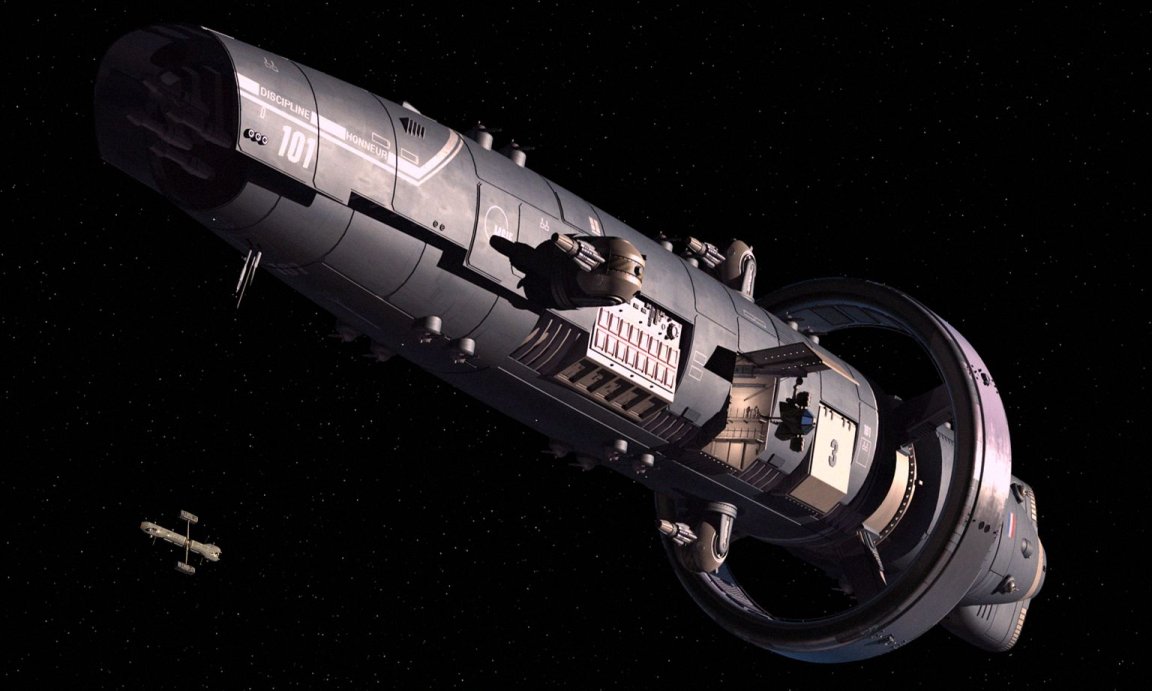
|
Above: The Patrie
on operations in the Kafer Sphere in early 2319 as the flag ship of the human
presence. The ship is operating its new Martel-IIRs
to increase its sensor coverage. The Bellatrix is seen in the distance as
the larger ship's 'goalkeeper'. The Marseillaise Class is undisputedly the
most powerful human warship that has ever been constructed. It was designed
following the experience of the Richelieu Class of battleships which bore the
brunt of so much fighting in the Kafer Wars and suffered heavy casualties. The
Marseillaise design was planned to be able to go broadside on with any Kafer
warship and ‘eat Deltas for breakfast’. The first ship was laid down in 2305 on
resumption of outright hostilities with the Kafers
and the second followed a year later and only two have ever been built. No
other nation has ever come close to building such a vessel, although several
claim to. The Marseillaise has a terrifyingly powerful nose mounted particle
cannon armament designed to ravage opposing capital ships as well as four of
the most powerful laser systems every produced. It also equipped with a
secondary laser armament as powerful as that on the
The Marseillaise was designed to have the
same general performance characteristics as the Richelieu Class whilst having
enhanced armour, screens and endurance. This resulted in a superb but
exceptionally expensive warship, known to the Anglophone allies as the ‘deathstar’. The Marseillaise
was just in time for the Battle of Nibelungen where
she shared the destruction of the Over Suzerain’s flagship. Joined a year later
by the Patrie these two ships spearheaded the
advance of the French Third and Fifth Fleets into the Kafer Sphere with the
human assault in 2311 achieving notable victories at Arcturus
and AC+18 1890-112. These ships were instrumental in the destruction of the
Kafer defences of Gamma Serpentis
especially the powerful orbital forts. The
Marseillaise Class have since been slowly upgraded and
remain a very visible symbol of French space combat power. One is permanently
deployed with the Fifth Fleet in the Kafer Sphere and the other usually
stationed above Earth. |

|
Above: The
Esprit de Xanadu in transit from Earth via Mars.
Although this route is usually not the quickest it is a popular detour for GST’s ships. The Desarge 8700 is the successor to the popular Desarge 8680 ‘Tall Ship’ liners operated by GST. The Tall
Ships are renowned across human for their luxury and decadence, and also for
the massive expense of travelling on such a ship. The Tall Ships concentrate on
plying the main, lucrative shipping routes from Sol to the colonial arms. There
are also a number of exclusive cruises scheduled to remote and exotic locations
across space. The Desarge 8900 had a prolonged developmental period with the
first ship starting construction in 2304. The escalation of the war meant that
this ship was the only one laid down for nearly eight years and construction
was notably slow. 2314 saw the second ship laid down
and several others have since followed. While a number of the older Tall Ships
saw military service in the rear areas the new liners have remained in GST’s hands throughout. The ship is notable
for its huge five deck ring with observation deck and very striking styling
again designed by GST’s eccentric and fabulously
wealthy Julius Bourge. The Desarge
8900 has carried on the tradition of individual decor and themes for each
vessel. The Esprit de Casablanca has a film noir style whilst the Esprit
de Versailles resembles a court of the ancien
régime for example. The recreational
facilities on these vessels are unmatched even running to swimming pools,
holographic theatres, spas and nightclubs. There are currently six of these
ships in service, exclusively with GST. The bulk of the Tall Ships could once
be found on the French Arm, now a majority can be found on the other colony
arms. The Myrmidon, Copyright, 2009 Laurent Esmiol and D Hebditch |
